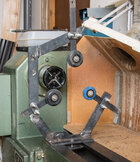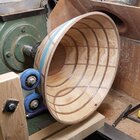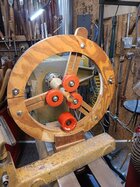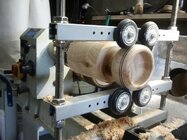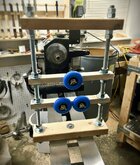john lucas
AAW Forum Expert
I built my steady rest many years ago using inline skate wheels. They are worn and sloppy now. I need new wheels. Any suggestions. I'm also going to modify my steady rest so it's hinged abd will open up so you can either remove it or reposition it without taking tge project down.

